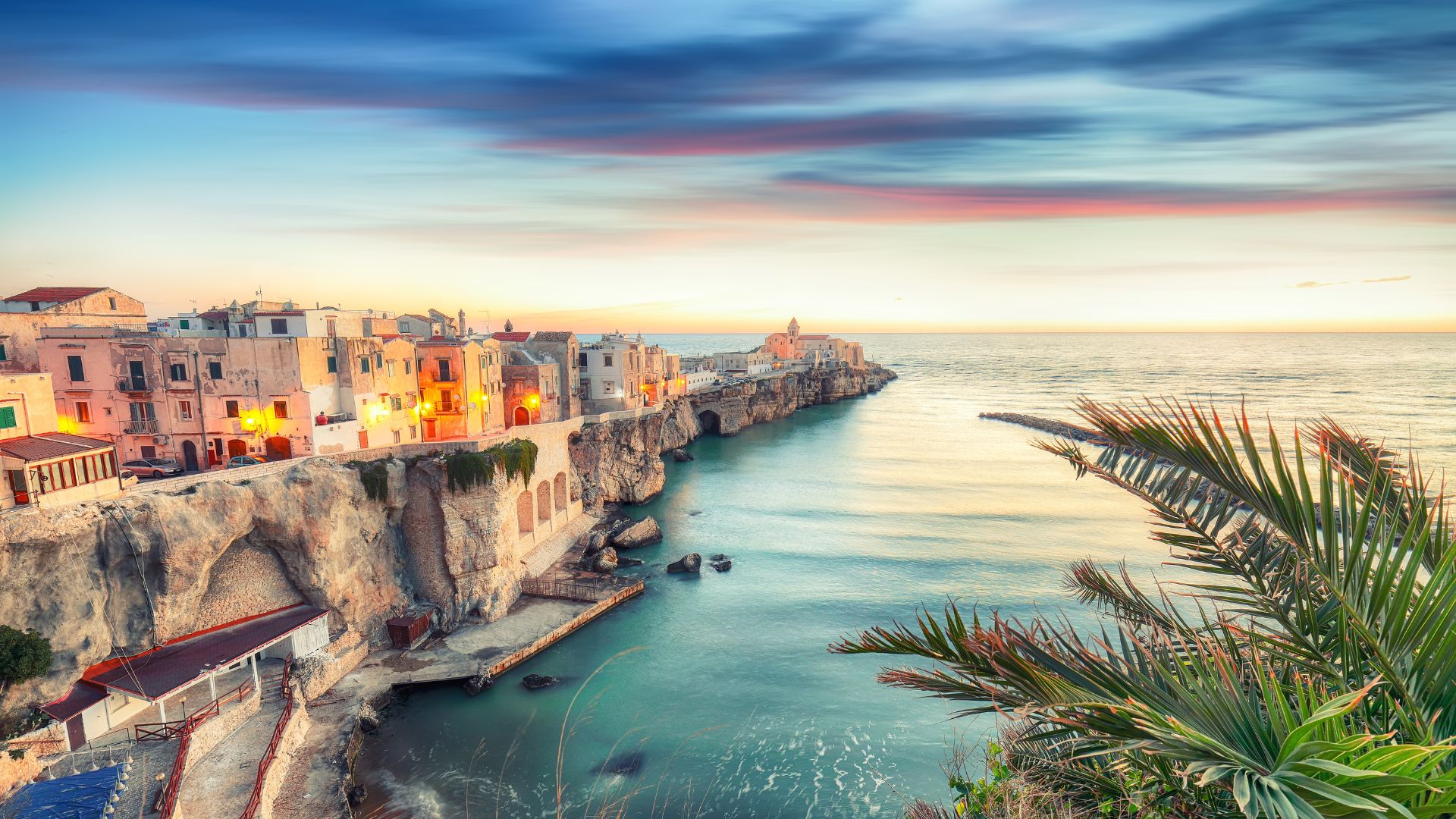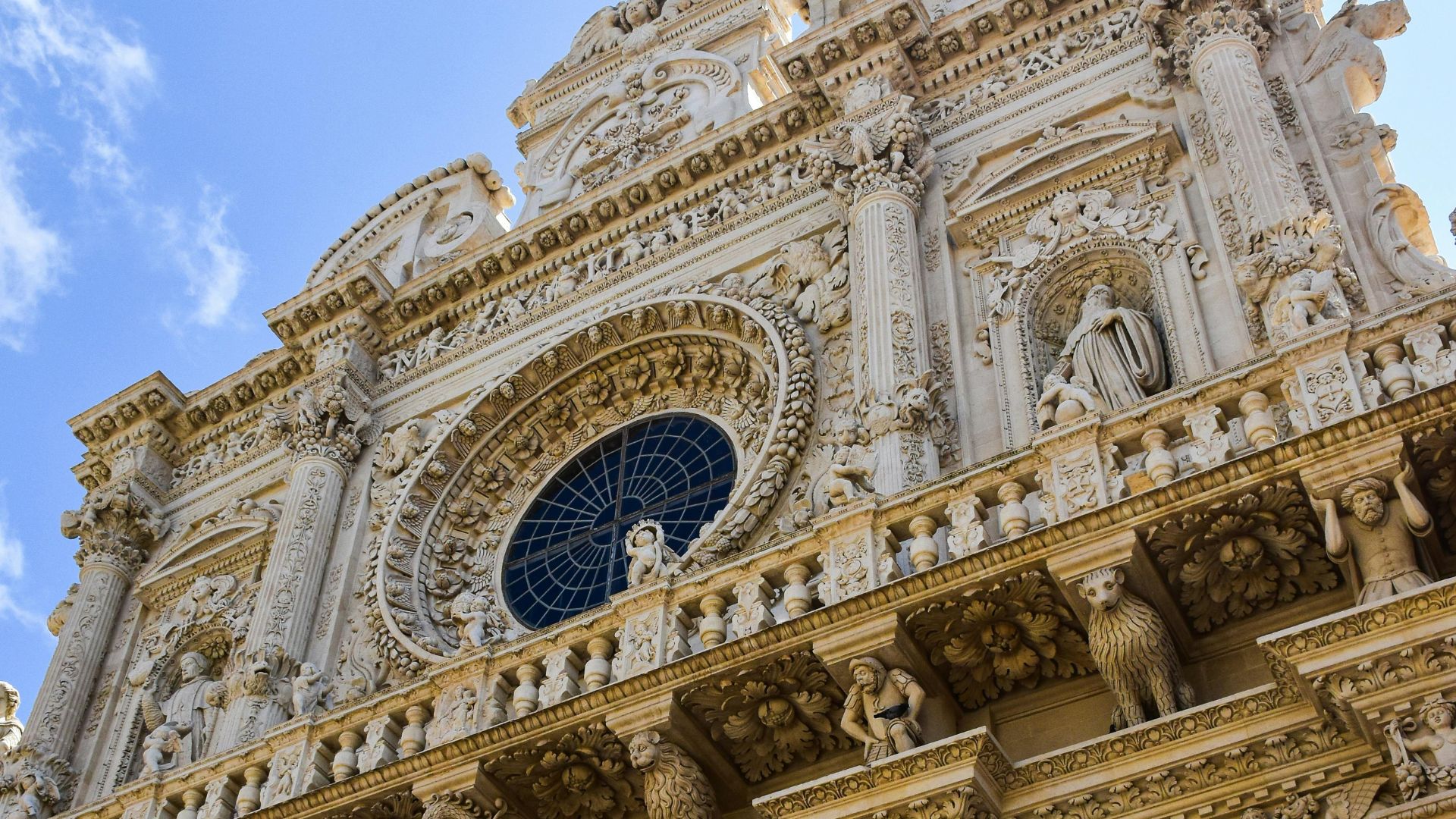Walking through Lecce’s sun-baked streets, I feel like I’ve wandered into a stone garden. Buildings seem to bloom with carved flowers, fruit, and wild creatures peeking out from every corner.
This small city in Puglia, Italy, is honestly one of the most spectacular showcases of Baroque architecture anywhere. Unlike the more reserved Baroque you’ll find elsewhere in Europe, Lecce’s buildings go all-in on decorative excess. Local limestone practically transforms into delicate floral motifs that almost make you forget it’s stone at all.
I’ll never forget the first time I saw the Basilica di Santa Croce. The honey-colored Lecce stone—locals call it “Leccisu”—forms an intricate façade that looks like a wild explosion of frozen vegetation.
This limestone formed millions of years ago from ancient sea mud. When freshly quarried, it’s soft enough to carve with amazing detail, but as it sits in the air, it hardens.
As I wandered Lecce’s old center, I got swept up in what the locals call a “baroque forest” of stone vines and tendrils. Each building tells its own story through sculptural details, turning the city into a kind of theatrical outdoor museum.
The craftsmen who built Lecce weren’t just architects or stonemasons—they were artists. They turned the city into a blooming garden of stone flowers that still amaze people centuries later.
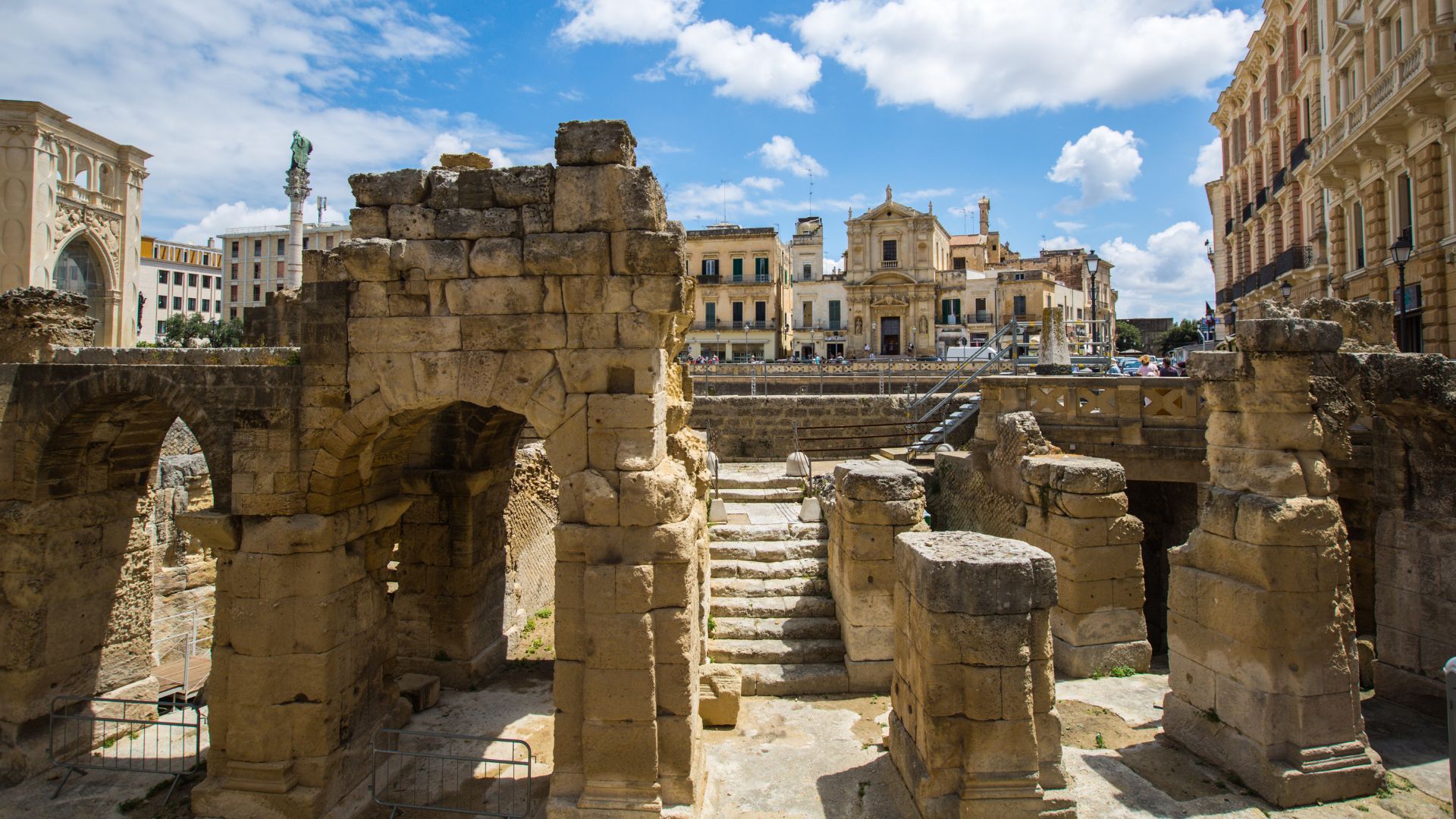
The Birth of Baroque in Lecce
Lecce’s baroque style took off in the 1500s. Local sculptors realized the soft, malleable Lecce stone could do things other stones couldn’t.
This unique movement blossomed thanks to religious inspiration, Spanish influence, and some truly exceptional local craftsmanship.
Historical Roots of the Baroque Movement
Baroque in Lecce started in the 16th century. It grew out of Renaissance roots but quickly became something entirely local.
Lecce Stone played a starring role. This golden limestone was soft when first quarried, and then it hardened in the open air.
I’ve seen firsthand how this material lets sculptors go wild with detail. The stone’s softness made it easy for artists to experiment with elaborate decorations—flowers, fruit, and all sorts of fantastical creatures.
What began as embellishments on churches soon spread to public buildings across Apulia. By the 17th century, Lecce’s skyline had completely transformed.
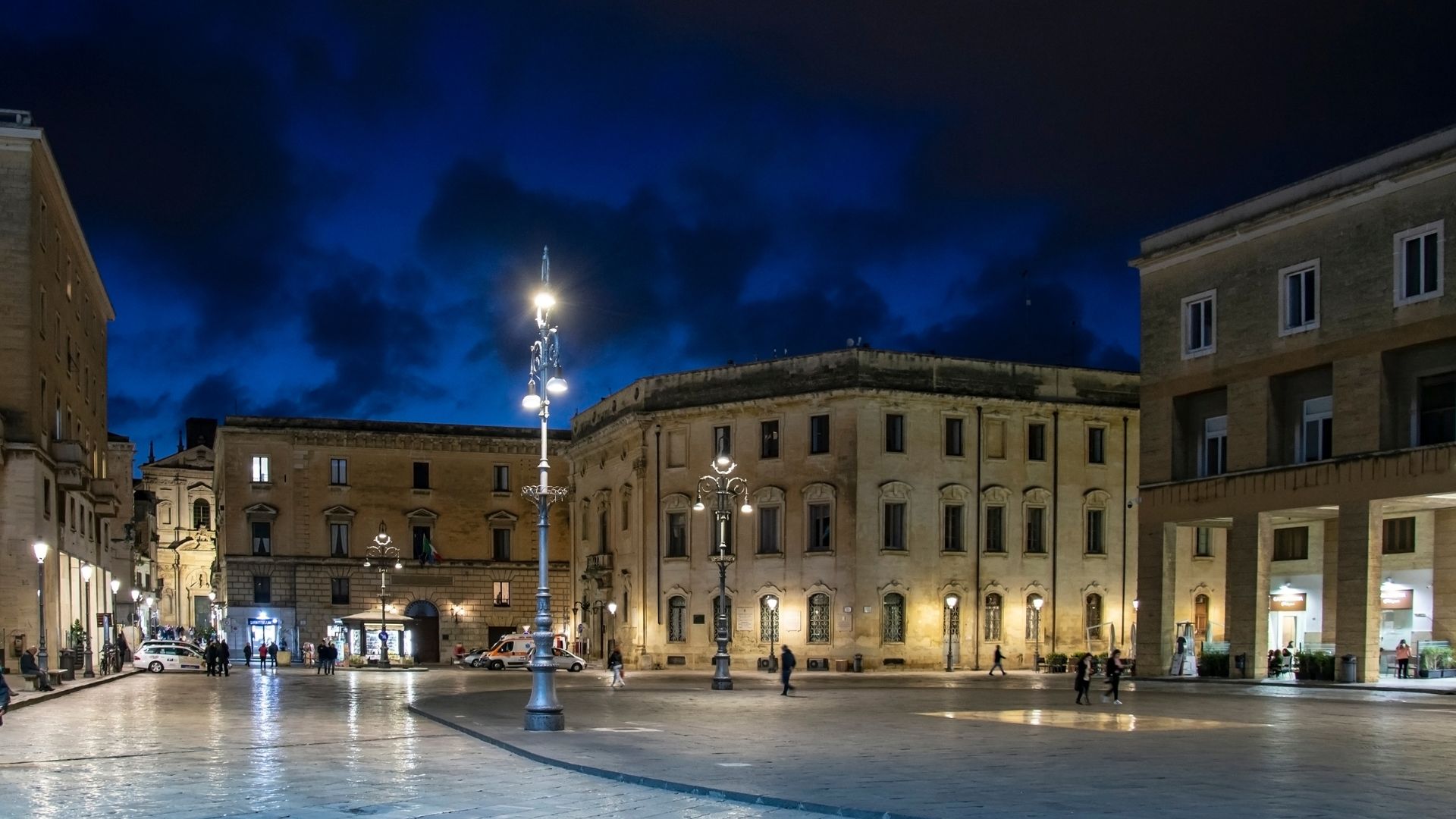
Influence of Spanish Rule in Southern Italy
Spanish rule in Southern Italy left a real mark on Lecce’s baroque style. Whenever I walk Lecce’s historic streets, I can’t help but notice touches of Spain in the architecture.
The Counter-Reformation, pushed hard by Spain, inspired the exuberant religious buildings. Spanish rulers encouraged this ornate style to show off both faith and power.
Local architects didn’t just copy Spanish designs, though. They blended outside influences with their traditions. The result? Buildings here ended up even more elaborately decorated than in the rest of Italy.
Lecce as the ‘Florence of the South’
People call Lecce the “Florence of the South” for good reason. The city center is packed with baroque masterpieces.
Unlike Florence’s more restrained Renaissance vibe, Lecce’s baroque is all about emotion and excess. Buildings here don’t just stand—they perform, with facades that pulse with movement and decoration.
Talented artists and craftsmen flocked to Lecce from all over Puglia. Their workshops trained generations of stone carvers who perfected the city’s signature look.
If you visit, take a moment to watch how sunlight shifts across the facades. Different details pop out at different times of day, and it’s honestly mesmerizing.
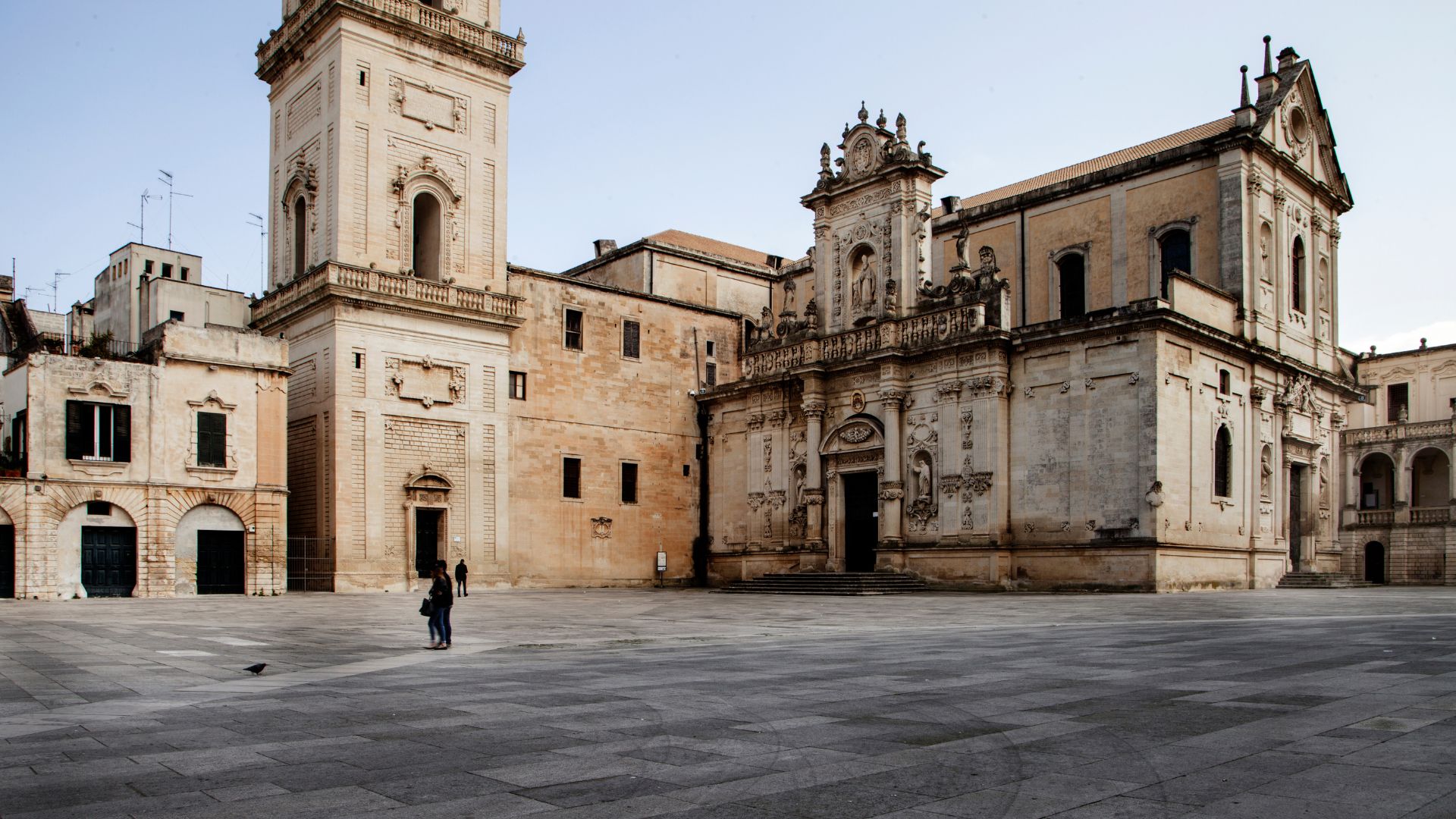
Signature Architectural Elements
Lecce’s Baroque architecture stands out for its distinctive decorative elements, all crafted from local limestone. The soft Lecce stone made it possible for artisans to carve out intricate details that turn buildings into works of art.
Ornate Facades and Exuberant Stonework
Every time I walk through Lecce, the elaborate facades catch my eye. “Leccisu,” as locals call the stone, starts soft and hardens with air.
This made it a dream for craftsmen. They covered surfaces with decorative details.
Friezes, volutes, and cornices show up on nearly every major building in the old town. Because the stone was so workable, artisans managed to pull off complex features that would be a nightmare with harder rock.
What gets me is how the stonework elevates even ordinary buildings into something special. Cherubs, mythic figures, and strange beasts peer down from facades, giving the city a kind of theatrical energy.
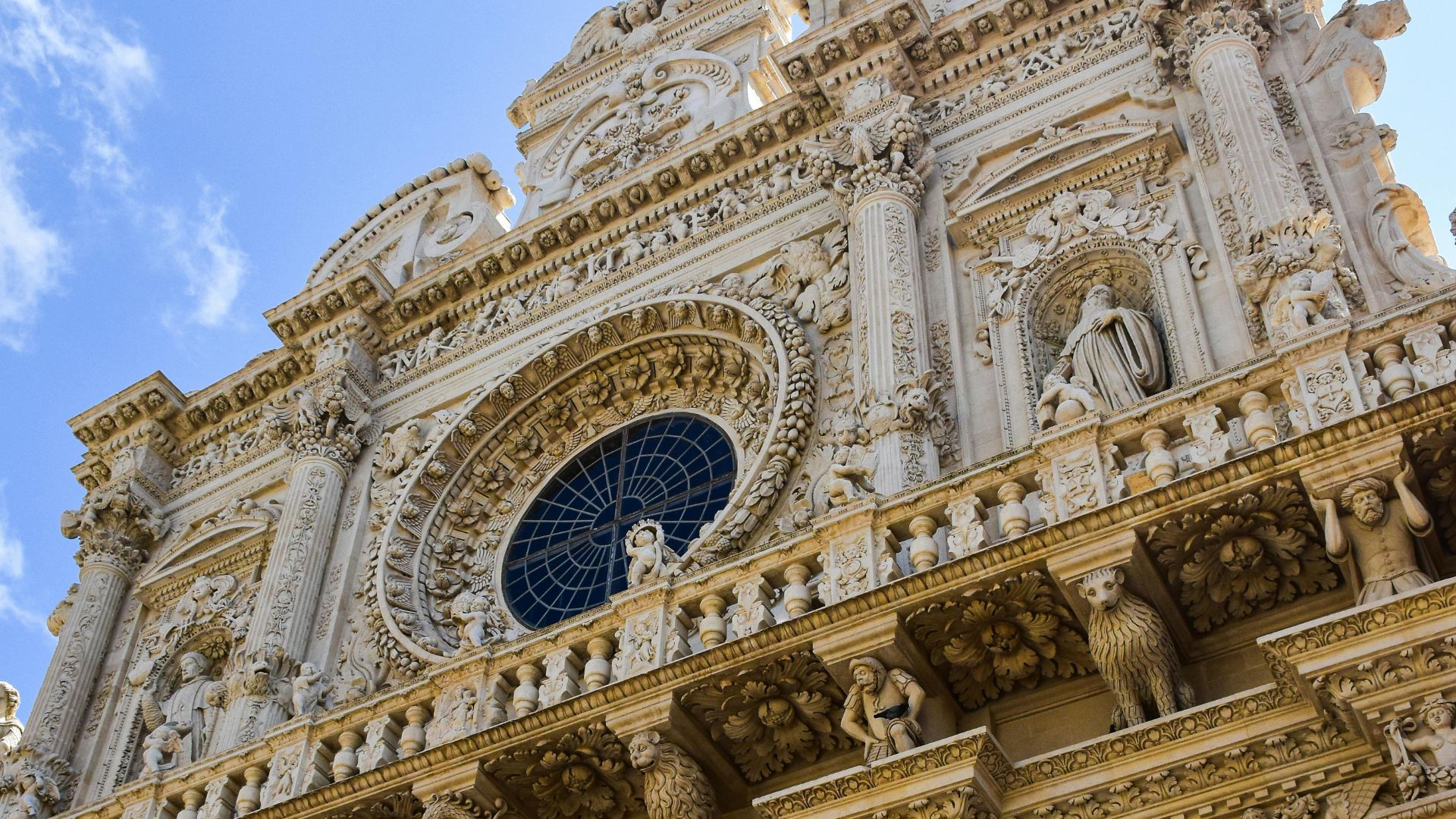
Famed Stone Flowers and Flourishes
The “stone flowers” of Lecce are legendary. These floral carvings seem to burst right out of the walls, columns, and doorways.
I’ve lost track of how many hours I’ve spent staring at delicate stone roses, lilies, and acanthus leaves. Some petals are so thin, they almost look see-through.
These flowers aren’t just for show—they’re Lecce’s signature. They make the stone feel alive and organic, almost like it’s growing.
The flourishes don’t stop at flowers, either. You’ll spot fruit, garlands, and ribbons swooping across the facades. Pulling off these details took serious skill. It’s a testament to the local artisans who adapted Baroque to their material.
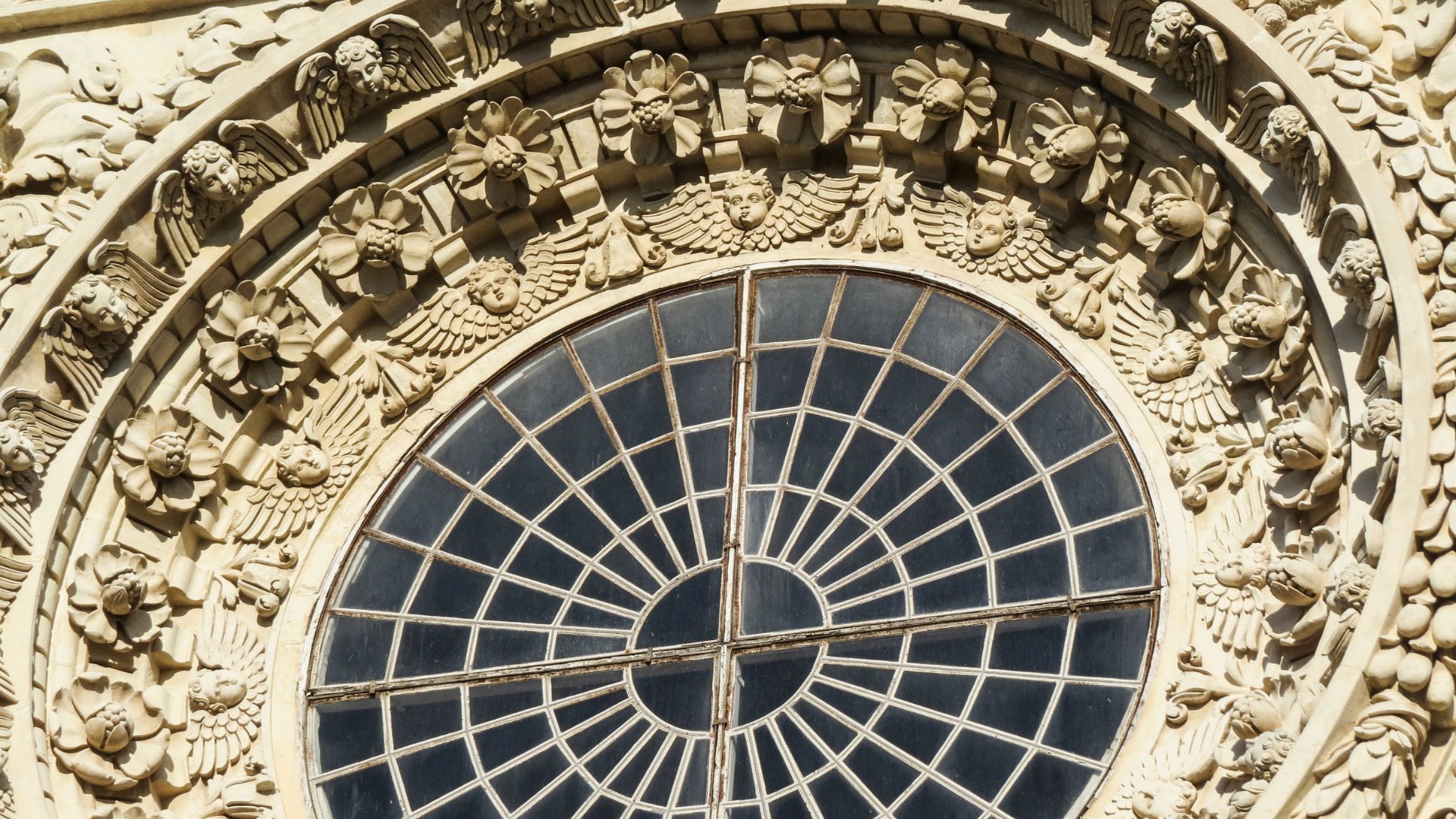
Color, Light, and Exclusive Details
Lecce stone gives the city a warm, honey glow, especially as the sun sets. Honestly, it’s one of my favorite things about the place.
Light dances across the deep carvings, throwing dramatic shadows that shift all day. It brings the buildings to life in a way that photos just can’t capture.
What makes Lecce’s architecture unique are the little surprises hidden in the ornamentation. I’ve found tiny faces, animals, and symbols that only reveal themselves if you’re looking.
The stone itself holds tiny fossils and seashell fragments—a reminder that it all started under the sea. These natural touches add even more texture to the already wild decorative schemes.
Some facades show patches where the stone has weathered differently, so you get these subtle color variations that make the buildings even richer to look at.
Iconic Baroque Landmarks in Lecce
Lecce’s baroque buildings turn the city into a living museum. The ornate stonework and theatrical decorations transform everyday structures into works of art that still tell stories from the city’s golden age.
Basilica of Santa Croce
The Basilica of Santa Croce is Lecce’s baroque crown jewel. The first time I saw it, the façade practically stopped me in my tracks.
Sculptures of animals, grotesque faces, and flowers seem to wriggle across the pale stone. Local artisans worked for nearly a century (1549–1646) to perfect every detail.
What makes Santa Croce so special is that the soft Lecce stone allows sculptors to carve designs so intricate that they almost look like lace.
Inside, the basilica impresses with ornate altars and a soaring ceiling. The simple interior contrasts beautifully with the riot of decoration outside—a balance that feels so Lecce.
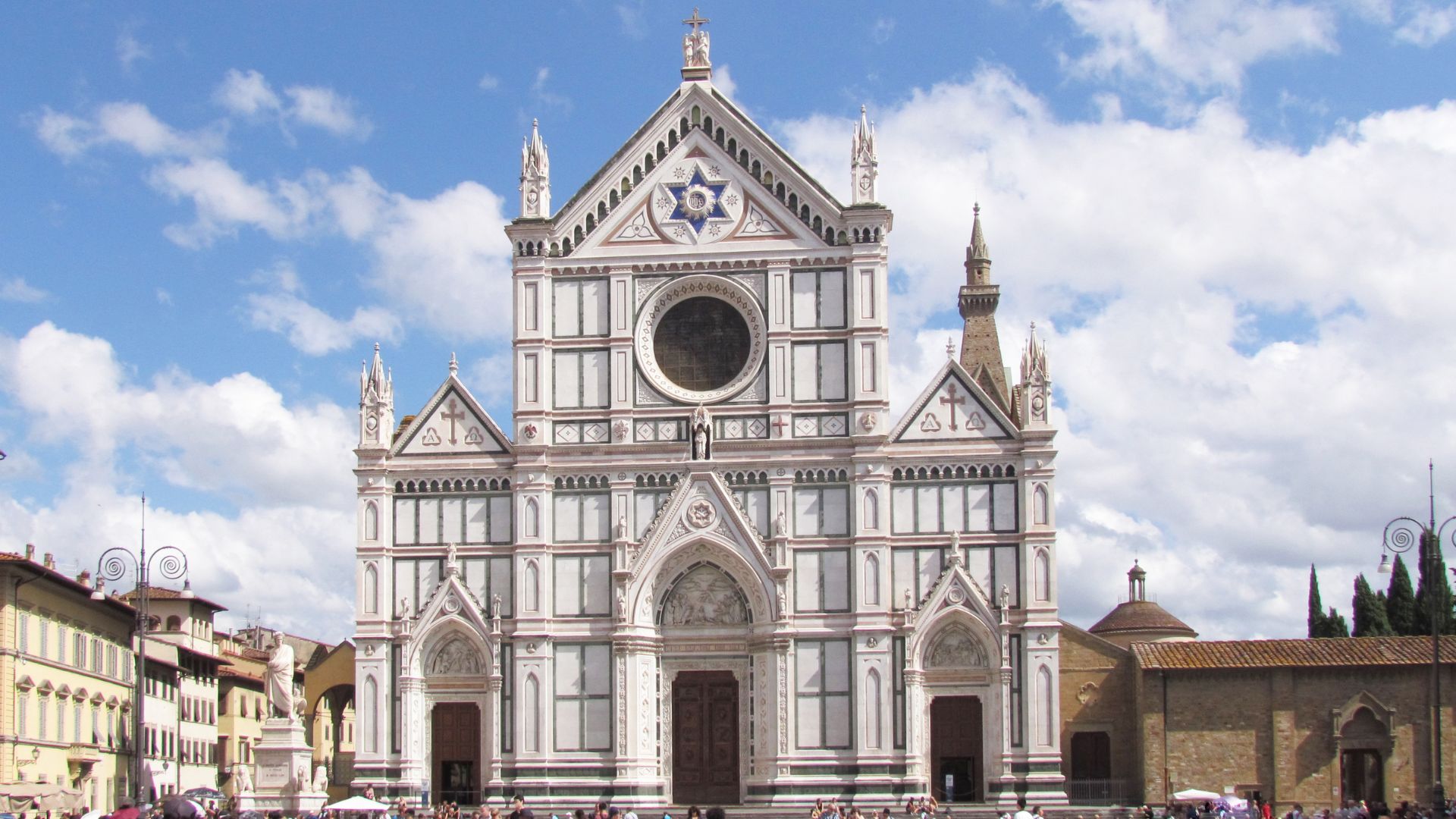
Piazza del Duomo and Other Squares
Piazza del Duomo is Lecce’s ultimate baroque stage. Stepping into this enclosed square feels like walking onto a set.
The Cathedral dominates with its double facades—the fancier one faces the square, not the street, which is a quirky architectural choice.
The 70-meter bell tower stands tall next to the cathedral and offers killer views if you’re up for the climb. I found the Seminary, Bishop’s Palace, and the other buildings just as fascinating. Each adds to the square’s harmonious baroque vibe.
A few other squares worth checking out:
- Piazza Sant’Oronzo with its Roman amphitheater
- Piazza Giuseppe Libertini in front of San Matteo
- Piazza Santa Chiara, which is great for a coffee break
Each square gives you a different slice of Lecce’s architectural story—and they’re perfect for people-watching over an espresso.
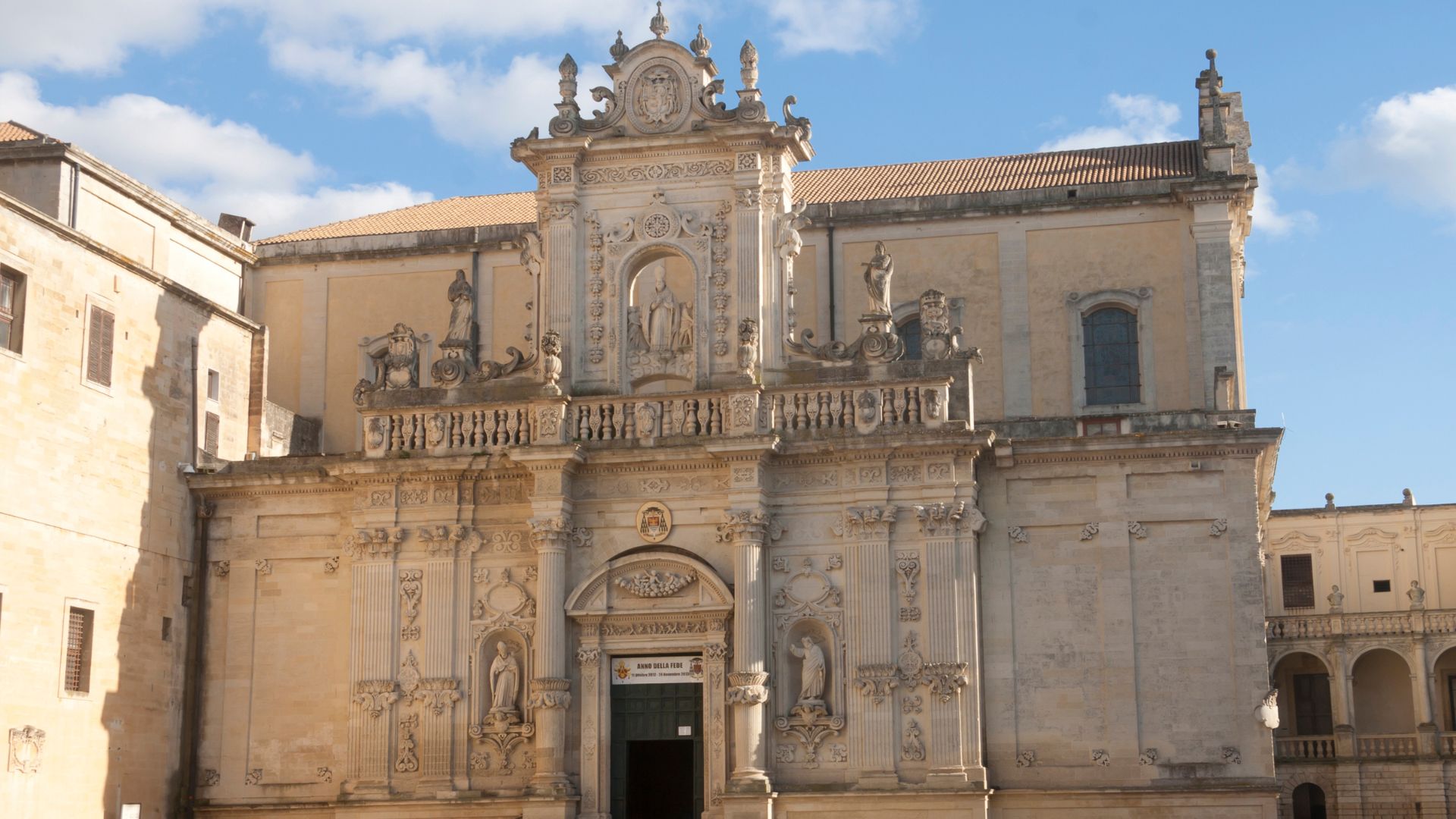
Hidden Gems Beyond the Historic Center
Lecce’s main sights draw the crowds, but I’ve found some amazing baroque gems off the beaten path. The Church of Saints Niccolò and Cataldo, originally from 1180 but revamped in the 1600s, mixes styles in a way that tells a story.
Palazzo Marrese and Palazzo Palmieri show how the baroque look made its way into private homes. Ornate balconies, fancy cornices, and grand doorways prove that baroque wasn’t just for churches.
Convitto Palmieri, now a library, has a gorgeous courtyard full of baroque details. I stumbled on it during a rainy afternoon and had the place to myself—just me and the stone carvings.
Exploring Lecce’s Baroque in the Puglian Landscape
Lecce’s over-the-top Baroque stands out against Puglia’s otherwise simple landscape. The region’s unique geography shapes how these buildings interact with their surroundings.
Stonework Set Against the Whitewashed Houses
Walking through Salento, I always notice how Lecce’s golden baroque buildings pop against the endless whitewashed houses you see in rural Puglia. That contrast feels deliberate—it marks Lecce as the “Florence of the South.”
The local pietra leccese gives the city its signature glow. This limestone starts soft, so sculptors could go wild with animals and fantasy creatures around every window and door.
In nearby towns like Otranto and Gallipoli, buildings are simpler. The bright white walls make Lecce’s baroque look even more dramatic when you see it.

Baroque Trails Across Salento
I’ve followed baroque influences all over the Salento peninsula. Lecce’s artistic energy spilled into the surrounding towns.
My favorite trail starts in Lecce’s old center, then heads south to Galatina and Gallipoli. Each town puts its own spin on the style, tweaking it for local tastes and materials.
The coastal setting adds a whole new dimension. Standing just outside Lecce, you can see how the architects used the flat landscape like a canvas. Many baroque churches were built as distant landmarks rising above olive groves.
The light here is something else. The Italian sun hits these ornate facades differently as the day goes on, making new details jump out as shadows shift.
Beyond Lecce: Baroque Inspirations Across Puglia
Lecce might be the crown jewel of Baroque in southern Italy, but the style spreads all over Puglia like branches from an old olive tree. The region is dotted with different takes on Baroque, mixing with other traditions to create a landscape that’s as visually fascinating as it is sun-soaked.
Baroque Influences in Martina Franca
As I wandered through Martina Franca’s historic center, those elegant Baroque facades immediately caught my eye. Honestly, they rival the ones you see in Lecce.
The town’s real showstopper is the Basilica di San Martino. Intricate stone carvings cover the facade, and there’s a certain delicacy to them—familiar, yet somehow different from Lecce’s bolder style.
You’ll spot the Palazzo Ducale next, which shows off the spread of Baroque influence. Here, though, the style feels more restrained, almost as if it’s holding back a bit.
As I walked through the old quarter, ornate balconies seemed to leap from the whitewashed buildings. The blue Puglian sky behind them made the contrast even more striking.
Martina Franca stands out because those Baroque touches blend right into the town’s whitewashed look. The effect is subtle, not as over-the-top as Lecce’s exuberance.
Every summer, local festivals like the Valle d’Itria Festival fill these historic spaces with opera performances. The whole town seems to come alive.
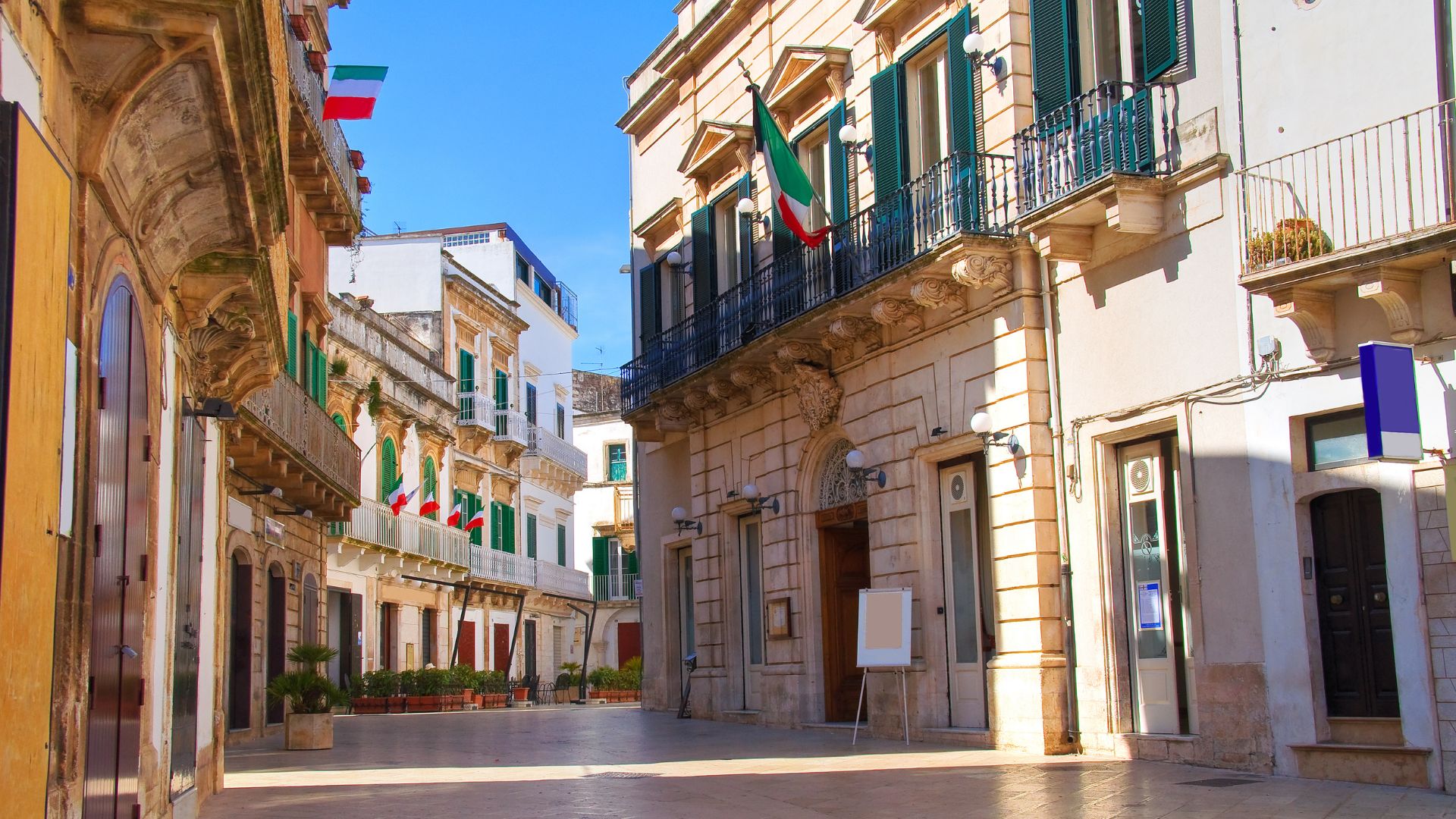
Connections with Ostuni, Otranto, and Bari
In Ostuni—the famous “White City”—Baroque details pop up in unexpected places. Against those dazzling white buildings, they really stand out.
The Cathedral in Ostuni has this gorgeous rose window. It’s a perfect example of how Baroque details slipped into older Gothic structures.
Otranto feels different. Here, Baroque additions sit alongside the town’s Byzantine and Romanesque foundations. The Cathedral holds one of Italy’s most remarkable mosaic floors, and later Baroque touches were added with a kind of gentle respect.
Bari’s old town brings in Baroque influences that feel more tied to Neapolitan traditions. The Basilica di San Nicola came before the Baroque period, but you’ll find nearby churches where the style was adapted to local tastes and materials.
I find it fascinating how each town takes in Baroque elements but keeps its own personality. In Bari, I loved watching locals shape orecchiette pasta right in the narrow streets of Bari Vecchia, just steps from those ornate church facades.
Trulli, Matera, Trani, and Taranto: Architectural Contrasts
The conical trulli of Alberobello break completely from Baroque extravagance. These simple limestone huts, with their quirky shapes, show off a kind of down-to-earth architecture that couldn’t be further from Lecce’s ornate style.
Not far away, Matera (okay, it’s technically in Basilicata, but you have to mention it) offers something else entirely. The ancient cave dwellings, known as “sassi,” feel raw and almost primordial. That vibe couldn’t be more different from Baroque flourishes.
Trani’s seafront Cathedral stands as a Romanesque masterpiece. The pale stone almost glows against the blue Adriatic, and the simplicity of the forms creates a spiritual atmosphere, just in a different way than Baroque ornamentation does.
Taranto’s old town sits on an island and shows off layers of history. You can see everything from Greek foundations to medieval and Baroque updates. There’s this mix of ancient and industrial that makes the city feel like a place of constant contrasts.
Cultural Threads: Wine, Orecchiette, and Local Life
Puglia’s architecture feels just as varied as its food. Primitivo and Negroamaro wines? They pair so well with the hearty dishes locals love.
I’ve spent evenings in family-run masserias, tucked under old stone vaults—sometimes with those wild Baroque flourishes overhead. People gather around long tables, sharing food, laughter, and stories.
Orecchiette pasta shows up everywhere, each piece shaped by hand. You can see the same kind of care in the region’s stone carvings.
In Brindisi’s harbor, I once watched women making orecchiette while swapping gossip with neighbors. These traditions seem to hold on, even as everything else changes.
Gargano’s coastal towns and forested hills move with the seasons. Festivals light up the streets, and Baroque church facades turn into glowing backdrops for processions.
There’s something about Puglia’s architecture that sticks with me. Sometimes it’s bold and ornate, like Lecce’s Baroque. Other times, it’s stripped-down and honest, like the trulli.
Honestly, the warmth of people here feels just as real as the buildings themselves. Maybe that’s what makes this place so inviting.
